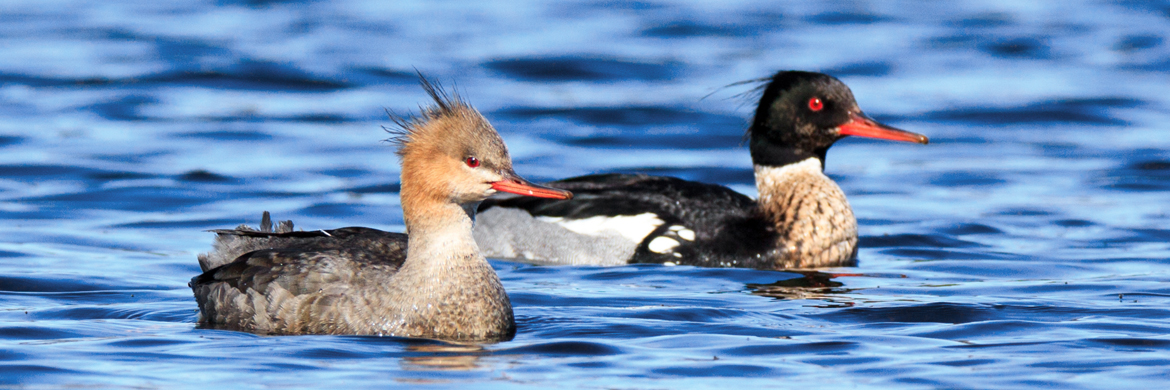
Red breasted merganser
Kouchibouguac National Park
Most visitors that make their way to the shorelines of Kouchibouguac’s lagoons during summer have an opportunity to observe the Common Tern, a small, very vocal seabird that breeds in the thousands on Tern Islands, an archipelago in the St-Louis Lagoon. However, Terns share this nesting site with the Red-breasted Merganser, a medium-sized fish-eating duck.
Much of what we know about the breeding biology of the Red-breasted Merganser in North America comes from studies at Kouchibouguac National Park. Since 1984, a team of ecologists and over twenty students from McGill University, Université Sainte-Anne, and Parks Canada have returned to Tern islands on an annual basis to uncover the way of life of this sea duck, making it one of the longest ongoing studies of any one bird population in eastern Canada.
An indicator of environmental health in the Kouchibouguac lagoons
Thanks to this research, Parks Canada has classified the Red-breasted Merganser as a key indicator species of marine productivity at Kouchibouguac National Park because adult and juvenile mergansers are tightly linked to estuarine food webs, foraging on a variety of small fish species. Any change to fish populations in the Park’s estuaries will be reflected in the overall health of the Red-breasted Merganser colony.
The near-water nesting habits of the Red-breasted Merganser makes the bird a valuable, early sentinel of change to the coastal environment, particularly which linked to sea-level rise. Red-breasted Mergansers prefer to place their nests in concealing beach grass and in close proximity to water; many nests are within 10 m of the tide line and is less than 2 m above sea level. These birds and their breeding habitat are extremely vulnerable to higher water levels. Flooding, resulting from storm surges reduces merganser breeding success and the abundance of nesting vegetation locally.
That being said, a healthy Red-breasted Merganser population at Kouchibouguac is evidence of a healthy estuarine ecosystem. So let’s be optimistic that the Red-breasted Merganser population in the park remains vibrant for many more generations to come!
- Date modified :